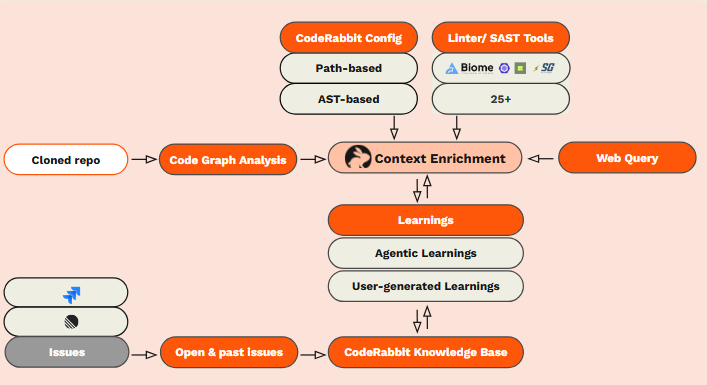Why it make sense to use AI for code review in 2025
Hello guys, Software development in 2025 looks very different from even a few years ago. Teams are building complex distributed systems, AI-powered applications, real-time streaming engines, and massive microservice architectures.
With this growing complexity comes a major challenge many teams still underestimate: maintaining consistent, high-quality code review practices at scale.
Even senior teams struggle with review fatigue, long PR queues, unpredictable review quality, and the increasing pressure to ship features faster.
Developers are moving fast, but most code review processes are still stuck in 2015 — slow, manual, and heavily dependent on individual reviewer availability.
It’s no wonder that concurrency bugs, memory errors, and security vulnerabilities often slip into production unnoticed.
At the same time, AI-driven code review tools have matured dramatically. What started as simple static-analysis bots has now evolved into intelligent assistants that understand context, spot deep anti-patterns, and comment on your PRs like a senior engineer.
Among these tools, CodeRabbit has emerged as one of the most practical and developer-friendly solutions. It reviews every pull request automatically, surfaces hidden issues, and helps developers fix weaknesses before human reviewers even open the tab.
So the big question for 2025 is clear:
Should teams rely more on AI for code review? Or do human reviewers still have the edge?
And what does the ideal workflow look like?
Let’s break it down.
Where Human Code Reviewers Excel?
Before jumping into AI code review, let’s see where Human code reviewers excel:
1. Architecture Understanding
Humans excel at understanding the bigger picture — how a change affects system design, data flow, scalability, latency, and long-term maintainability.
AI tools are improving rapidly, but architectural judgment is still fundamentally human-driven.
2. Business Logic Validation
Humans understand the domain, customer requirements, revenue impact, product goals, and stakeholder expectations. A good senior engineer can tell you whether the code does the right thing, not just the correct thing.
3. Trade-offs & Contextual Decisions
Should we optimize for performance or readability? Should we ship now or refactor first? Should we simplify this microservice or keep it flexible for future features? These decisions require situational awareness that AI does not fully possess.
4. Long-Term Design Thinking
Humans think in terms of future-proofing, team skills, technical debt, and overall evolution of the codebase.
They consider factors far beyond what’s in a single PR.
Bottom line: Human reviewers are irreplaceable when it comes to strategic thinking, design quality, and domain alignment.
Where AI Code Review Tools Excel (Especially in 2026)
Now, let’s see where we can use AI code review and what does they offer:
1. Pattern Detection & Anti-Patterns
AI tools can scan thousands of lines instantly and spot patterns that humans overlook — such as inefficient loops, risky API usage, or subtle code smells.
Tools like CodeRabbit excel here by offering deep, context-aware reviews automatically for every PR.
2. Concurrency & Thread-Safety Issues
Humans often miss race conditions, improper locking, shared mutable state issues, and deadlock risks. AI catches these early by analyzing code deeper and more consistently.
3. Large PR Scanning
Let’s be honest: Humans hate reviewing 1,000-line pull requests.
And developers often skim through these reviews just to unblock the pipeline.
AI doesn’t get tired.
AI doesn’t skim.
AI doesn’t ignore things because it’s 6 PM on a Friday.
4. Enforcing Style & Consistency
Consistent naming, formatting, error handling, null checks, and other hygiene tasks can be automated.
AI ensures your codebase stays clean without burdening senior engineers.
Tools like CodeRabbit automate 60%+ of the mechanical review workload — and they do it instantly.
AI vs Human: Which One Is Better in 2025?
If you’re looking for a clear winner, here it is:
Neither AI nor human reviewers are “better.”
They are better together.
AI gives you:
- Speed
- Accuracy
- Consistency
- 24/7 availability
- Deep pattern analysis
Humans give you:
- Judgment
- Design thinking
- Domain expertise
- Prioritization
- Mentorship and code ownership
In 2025, the smartest engineering teams have realized something simple:
AI should handle the first pass.
Humans should handle the final pass.
This hybrid model improves both speed and quality.
The Best Workflow: AI + Human Reviewers Working Together
Here is the modern code review flow used by high-performing teams:
- Developer opens a PR
- CodeRabbit automatically reviews it
- AI flags issues:
- Concurrency bugs
- Code smells
- Style inconsistencies
- Missing test cases
- Security risks
4. Developer fixes these issues instantly
5. PR goes to a human reviewer
6. Human reviewer now focuses on:
- Design
- Architecture
- Business logic
- Edge cases
- Feature alignment
7. PR merges faster with higher quality
This is exactly the workflow companies like Uber, Meta, Stripe, and Shopify are moving toward — because it saves time, prevents bugs, and reduces cognitive load on senior engineers.
Final Verdict: AI + Humans = The Future of Code Review
Let’s be honest, AI isn’t replacing human reviewers. It’s amplifying them.
AI handles the repetitive parts.
Humans handle the strategic parts.
Codebases become cleaner.
PRs merge faster.
Teams move with confidence.
If your team still relies on only manual reviews, you’re already behind.
If you embrace both, you’re designing for the world we’re actually building in 2025 — fast, distributed, AI-accelerated, and engineering-driven.
To get started, try CodeRabbit — one of the best AI-powered review tools available today.
Other Code Review articles you may like
Learn more about AI Code Review vs Human Review — What’s Better in 2025?
